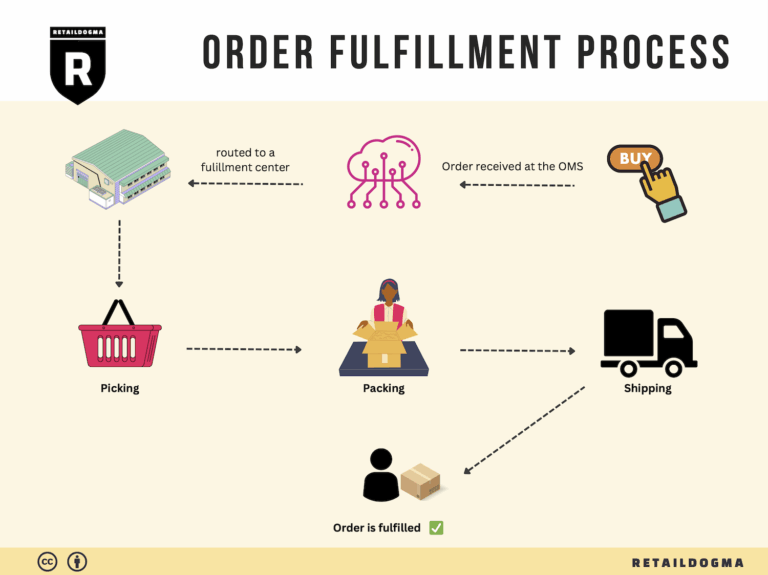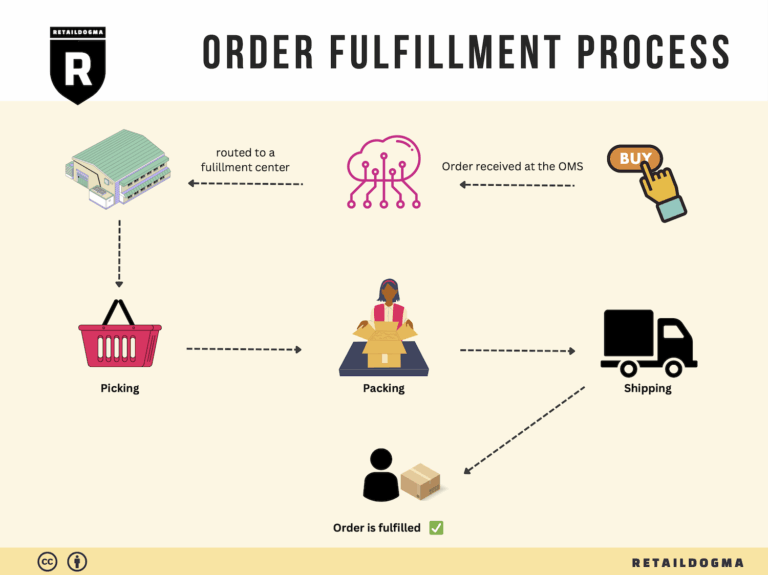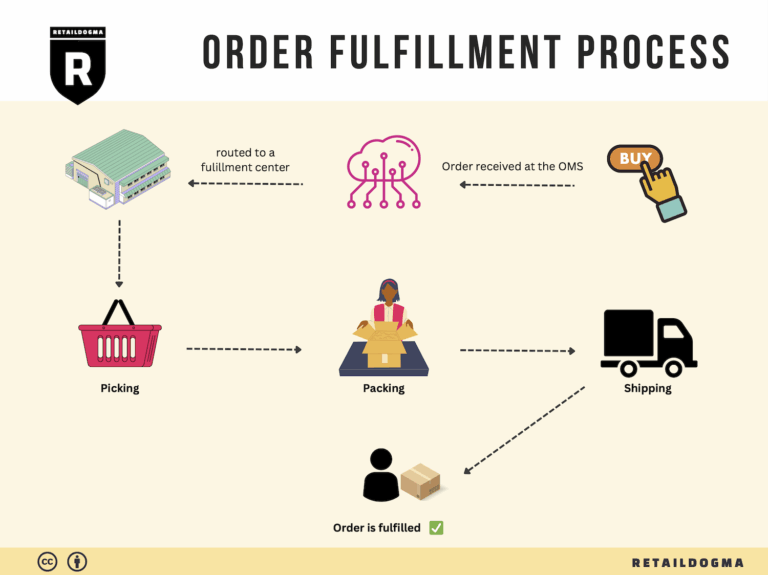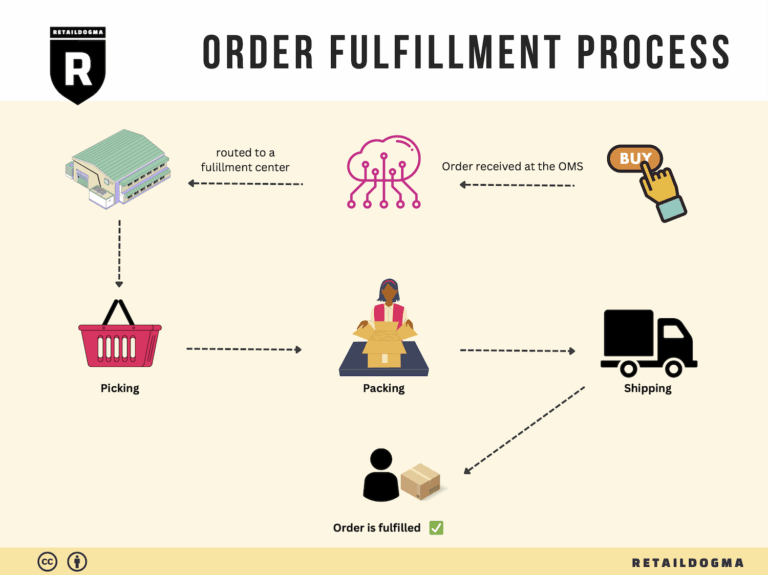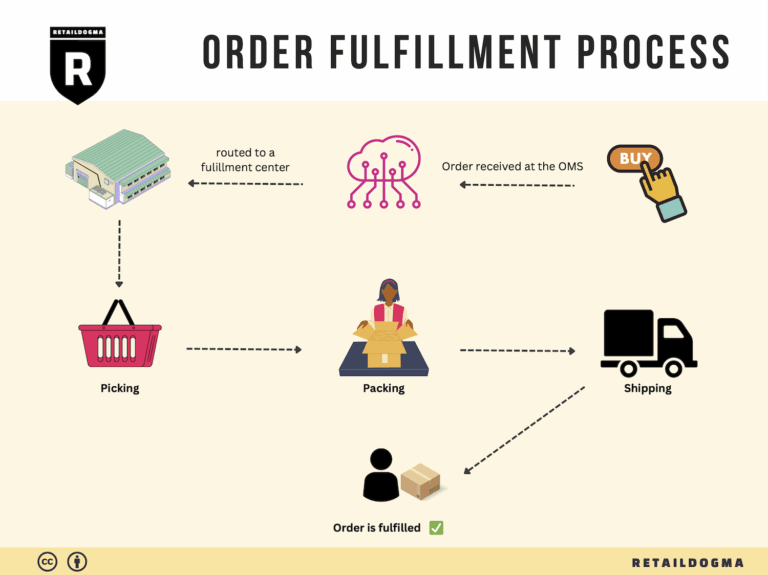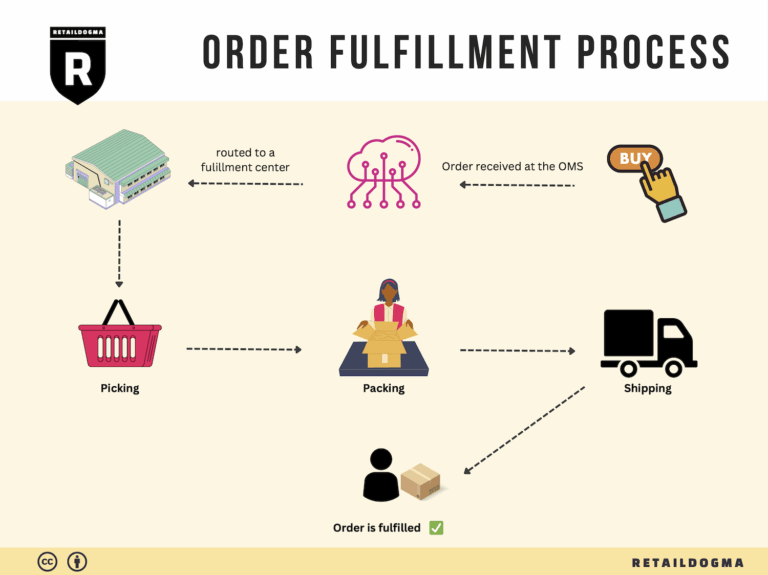Ecommerce Fulfillment Services: The Ultimate Guide (2025)
What is E-commerce Fulfillment? An Introduction for Growing Businesses
Understanding E-commerce Fulfillment
As an e-commerce business owner, you’ve likely experienced the frustration of managing packing and shipping orders—especially as your sales start to grow. The excitement of increased orders can quickly turn into a logistical nightmare, overwhelming you with the demands of timely delivery and accurate inventory management. This is where e-commerce fulfillment steps in.
Fulfillment, in its simplest form, is the process of getting a product into the hands of a customer. It encompasses everything from receiving inventory, storing products, picking and packing orders, to shipping them out. As businesses scale, understanding the intricacies of fulfillment becomes crucial for maintaining customer satisfaction and optimizing operational efficiency.
This guide aims to demystify e-commerce fulfillment for growing businesses. We will explore various fulfillment models, including Third-Party Logistics (3PL) and Fulfillment by Amazon (FBA), and discuss their respective advantages and disadvantages. Each model offers unique benefits tailored to different business needs, allowing you to select the best fit for your operations.
In addition to models, we will delve into the core services that fulfillment partners typically provide. These include inventory management, order processing, shipping, and returns handling. Understanding these services will help you assess what you truly need from a fulfillment partner, ensuring that you don’t pay for unnecessary features while still covering all your bases.
Choosing the right fulfillment partner can be daunting, given the multitude of options available. This guide will provide practical tips on what to look for in a partner, including service reliability, scalability, technology integration, and customer support. We will also discuss the importance of aligning your partner’s capabilities with your business goals.
Finally, we will touch on pricing models and how to evaluate costs associated with different fulfillment options. Understanding the financial implications of your choices is essential for making informed decisions that support your growth without compromising your bottom line.
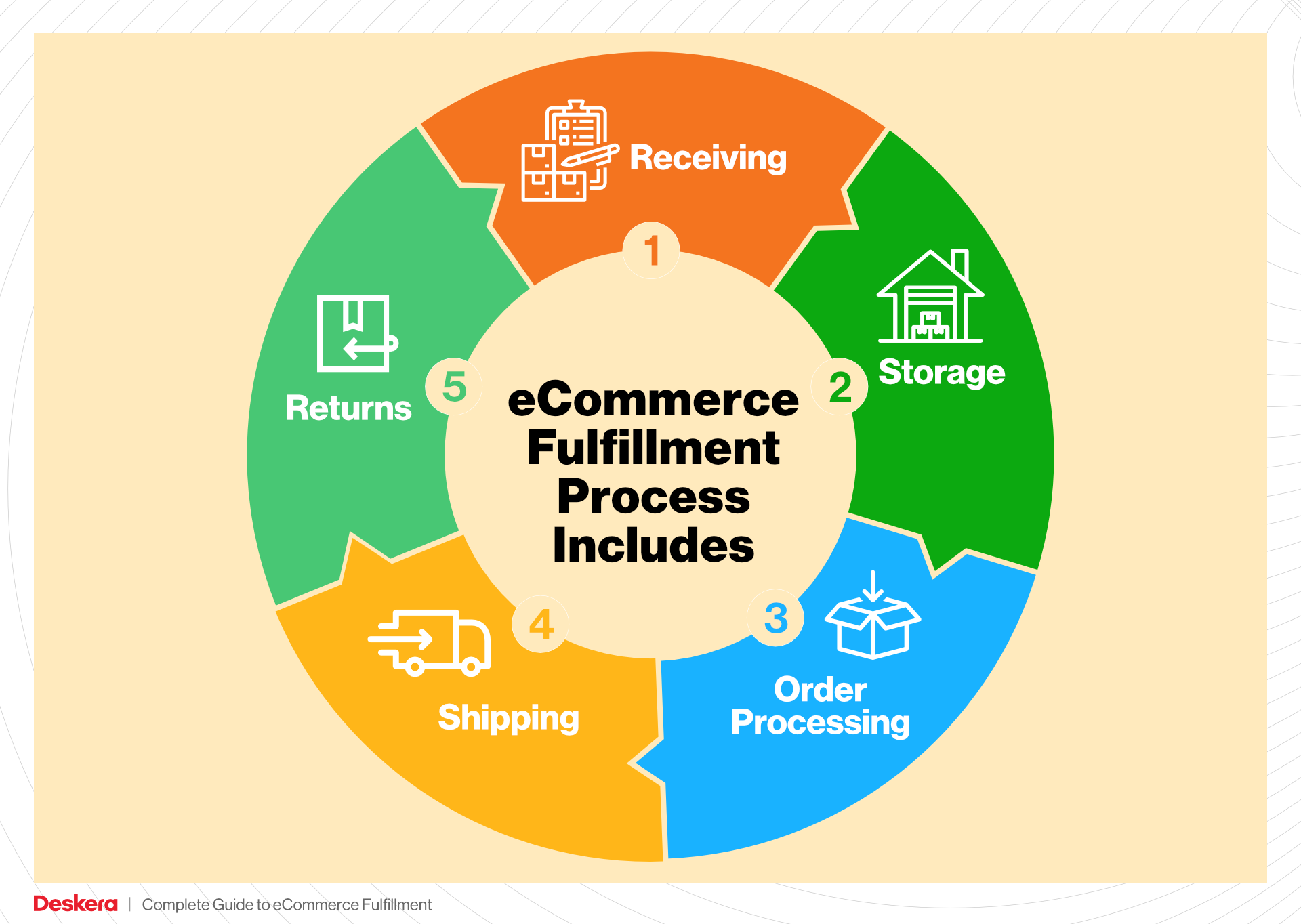
The ultimate goal of this guide is to empower e-commerce businesses to make smart, strategic decisions about their logistics. By understanding the fulfillment landscape, you can focus on what you do best—growing your business—while ensuring your customers receive their orders promptly and accurately.
What You’ll Learn In This Guide
- What is E-commerce Fulfillment? An Introduction for Growing Businesses
- The Order Fulfillment Process: From ‘Buy’ Button to Customer’s Door
- Comparing Fulfillment Models: In-House vs. 3PL vs. Dropshipping
- A Deep Dive into Amazon FBA: Pros, Cons, and Who It’s For
- Core Services Offered by Fulfillment Centers
- How to Choose a Fulfillment Partner: A 6-Point Checklist
- Understanding Fulfillment Pricing: A Breakdown of Common Fees
- Frequently Asked Questions (FAQs) about Fulfillment
- Conclusion: Is Outsourcing Fulfillment the Right Move for Your Business?
- Important Disclaimer
The Order Fulfillment Process: From ‘Buy’ Button to Customer’s Door
1. Receiving Inventory
The first step in the order fulfillment process is the receiving of inventory. This involves the acceptance of goods into the fulfillment center, where they are checked against purchase orders for accuracy. Upon arrival, each item is scanned and logged into the inventory management system, ensuring that it is properly accounted for. This process is critical as it establishes the baseline inventory levels and enables efficient tracking of stock levels.
Key term: SKU (Stock Keeping Unit) – Each product is assigned a unique SKU, which helps in identifying, tracking, and managing inventory. Accurate receiving ensures that the SKU data is correct, which is essential for subsequent steps in the fulfillment process.
2. Warehouse Storage
Once inventory is received, the next step is warehouse storage. Products are organized and stored in designated locations within the fulfillment center based on various factors such as size, weight, and sales velocity. Efficient storage practices are vital as they directly impact the speed and efficiency of the picking process.
Utilizing a systematic storage method, such as ABC analysis, helps prioritize items based on their demand. High-demand items are placed in easily accessible locations to minimize picking time, while less frequently ordered products are stored further away. An organized storage system not only speeds up the order fulfillment process but also optimizes space utilization within the warehouse.
3. Order Picking
Order picking is the process where items are selected from the warehouse to fulfill customer orders. When a customer places an order, a pick list is generated, detailing the SKUs and quantities required. This list guides warehouse associates as they navigate the storage areas to gather the items.
This step is crucial for maintaining order accuracy and speed. Efficient picking methods, such as batch picking (where multiple orders are picked simultaneously) or zone picking (where pickers are assigned specific areas), can significantly enhance productivity. Moreover, implementing technology such as handheld scanners or pick-to-light systems can reduce picking errors and increase efficiency.
4. Order Packing
After items have been picked, they move to the packing station. Here, each order is carefully packed into appropriate shipping boxes or envelopes. This step involves ensuring that products are protected during transit, using materials such as bubble wrap, packing peanuts, or air pillows.
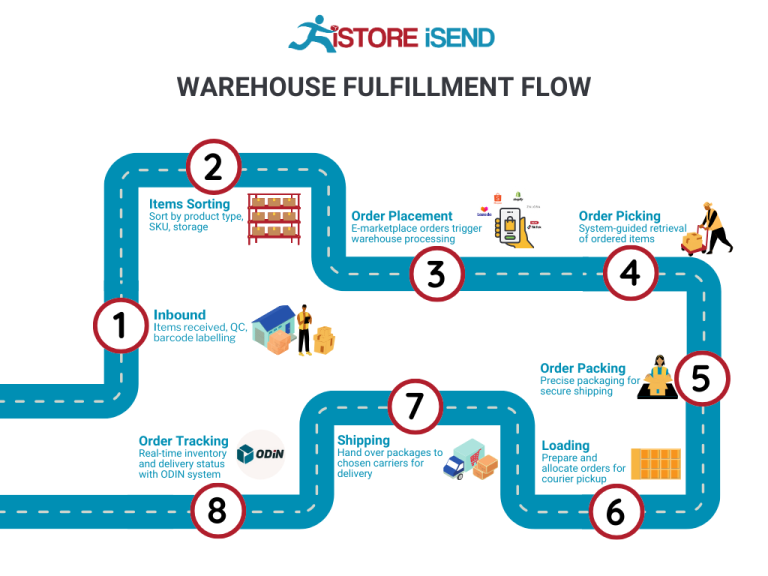
Proper packing is essential for minimizing damage during shipping, which can lead to costly returns and dissatisfied customers. Additionally, packing slips and shipping labels are generated and attached to the packages. The use of dimensional weight pricing is also important in this stage, as it can affect shipping costs based on the size and weight of the package.
5. Shipping & Delivery
The final step in the order fulfillment process is shipping and delivery. Once packed, orders are staged for shipment based on the selected shipping method (e.g., standard, expedited, or same-day delivery). Coordination with logistics partners, such as FedEx or UPS, ensures that packages are dispatched efficiently.
This phase is critical as it directly impacts customer satisfaction. Timely delivery and accurate tracking information enhance the overall customer experience. Last-mile delivery is particularly important, as it refers to the final leg of the shipping journey, where the package is delivered to the customer’s door. Effective management of this stage can lead to improved customer loyalty and repeat business.
Conclusion
Understanding and optimizing each step of the order fulfillment process is crucial for e-commerce businesses looking to scale operations. By ensuring accuracy in receiving, efficient storage, effective picking, careful packing, and timely shipping, businesses can enhance their logistics capabilities, reduce operational costs, and improve customer satisfaction. Implementing best practices and leveraging technology at each stage can transform fulfillment into a competitive advantage.
Comparing Fulfillment Models: In-House vs. 3PL vs. Dropshipping
Fulfillment Model Comparison
| Model | Who Handles Inventory | Best For (Business Stage) | Key Advantage | Key Disadvantage |
|---|---|---|---|---|
| In-House Fulfillment | The business itself | Established businesses | Complete control over operations | High overhead costs |
| Third-Party Logistics (3PL) | A third-party provider | Startups to mid-sized businesses | Scalability and expertise | Less control over inventory |
| Dropshipping | Supplier | Startups and small businesses | Low startup costs and risk | Lower profit margins |
In-House Fulfillment
In-house fulfillment refers to the process where a business manages its inventory, storage, and shipping operations directly within its facilities. This model is most suitable for established businesses that have a consistent order volume and the financial resources to invest in warehousing and logistics. The primary advantage of in-house fulfillment is the complete control it offers over the entire supply chain, allowing businesses to implement tailored processes and maintain quality standards. However, this model comes with significant overhead costs, including labor, facility maintenance, and equipment, which can be a burden for smaller businesses or those with fluctuating order volumes. Additionally, in-house fulfillment requires a dedicated team and infrastructure to handle operations, which can detract from a company’s core business activities.
Third-Party Logistics (3PL)
Third-party logistics (3PL) involves outsourcing fulfillment operations to a specialized logistics provider. This model is ideal for startups and mid-sized businesses that may lack the resources to manage logistics effectively. By partnering with a 3PL, businesses can leverage the provider’s expertise, technology, and infrastructure to streamline their supply chain operations. Key advantages of using a 3PL include scalability, as businesses can easily adjust their fulfillment capacity based on demand, and access to advanced logistics technology without the need for significant capital investment. However, one of the key disadvantages is the reduced control over inventory and shipping processes, which can lead to discrepancies in service quality and challenges in communication. Additionally, businesses must ensure that the 3PL aligns with their customer service standards to maintain their brand reputation.
Dropshipping
Dropshipping is a fulfillment model where a retailer does not keep goods in stock but instead transfers customer orders and shipment details directly to a supplier, who then ships the products directly to the customer. This model is particularly advantageous for startups and small businesses as it requires minimal upfront investment and eliminates the need for inventory management. One of the most significant benefits of dropshipping is the low risk involved; businesses can offer a wide range of products without committing to purchasing inventory. However, dropshipping typically results in lower profit margins due to reliance on suppliers for fulfillment and shipping. Furthermore, businesses have limited control over product quality, shipping times, and customer service, which can impact customer satisfaction and brand loyalty. As the market becomes increasingly competitive, finding reliable suppliers and differentiating products can also pose challenges for dropshippers.
Conclusion
Choosing the right fulfillment model is a critical decision for e-commerce businesses looking to scale. Each model—In-House Fulfillment, Third-Party Logistics, and Dropshipping—offers distinct advantages and disadvantages that can significantly impact operations and customer experience. It’s essential for business owners to assess their current stage, financial resources, and long-term goals when selecting the most suitable fulfillment strategy. By understanding these models in detail, entrepreneurs can make informed decisions that align with their business objectives and enhance their logistics capabilities.
A Deep Dive into Amazon FBA: Pros, Cons, and Who It’s For
Understanding Fulfillment by Amazon (FBA)
Fulfillment by Amazon (FBA) is a service offered by Amazon that allows sellers to store their products in Amazon’s fulfillment centers. When a customer orders a product, Amazon takes care of storage, packaging, and shipping, as well as customer service and returns. This service enables sellers to leverage Amazon’s vast logistics network and customer base, making it a compelling option for many e-commerce businesses.
How FBA Works
-
Set Up Your FBA Account: Sellers need to create an Amazon seller account and enroll in FBA. This involves providing business information and agreeing to Amazon’s terms of service.
-
Prepare Your Products: Sellers must prepare their products according to Amazon’s guidelines. This includes labeling and packaging items appropriately to ensure they are ready for storage and shipment.
-
Ship Products to Amazon: Once prepared, sellers ship their products to Amazon’s fulfillment centers. Amazon provides guidelines on where to send products and how to pack them.
-
Storage and Inventory Management: Products are stored in Amazon’s warehouses, where Amazon manages inventory levels. Sellers can monitor their inventory through their seller dashboard.
-
Order Fulfillment: When a customer places an order, Amazon picks, packs, and ships the product on behalf of the seller. Orders are typically processed quickly, often within one day.
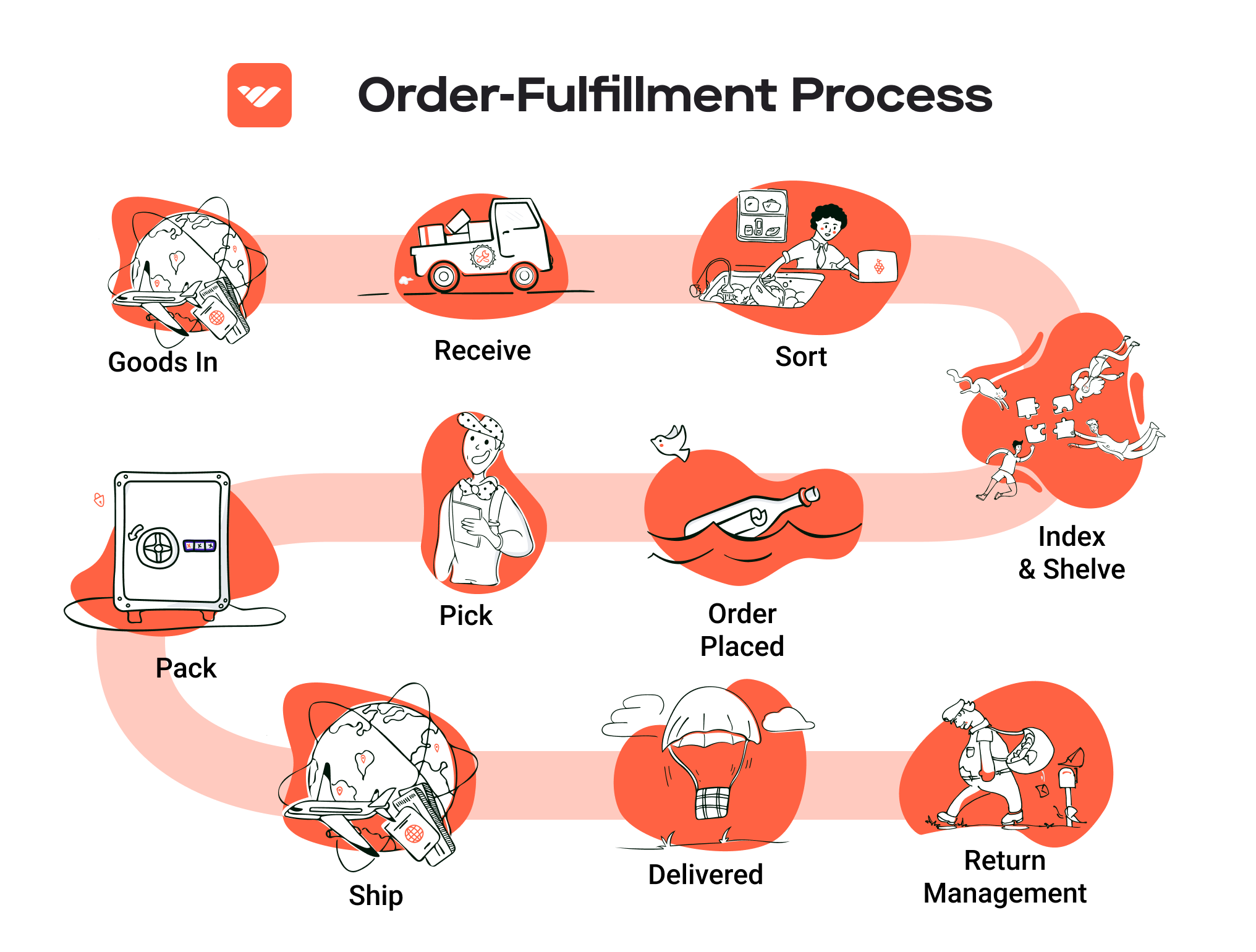
-
Customer Service: Amazon handles customer inquiries and returns, providing a seamless shopping experience for customers.
-
Payment: After an order is fulfilled, Amazon transfers the sale proceeds to the seller, deducting FBA fees.
Pros of FBA
Prime Eligibility
One of the most significant advantages of using FBA is that products become eligible for Amazon Prime. This can significantly boost sales, as Prime members tend to prefer products that offer fast, free shipping. This eligibility often leads to increased visibility and higher conversion rates.
Customer Trust
Amazon’s brand is synonymous with reliability and quality service. By utilizing FBA, sellers can benefit from the trust that customers place in Amazon. This trust can lead to more sales, as customers are often more willing to purchase from sellers who use FBA.
Multi-Channel Fulfillment
FBA is not limited to just sales on Amazon. Sellers can use FBA to fulfill orders from other sales channels, including their own websites. This flexibility allows businesses to streamline operations and manage inventory more effectively across different platforms.
Scalability
FBA allows businesses to scale quickly without the need for significant investment in warehousing and logistics. As demand increases, sellers can send more products to Amazon’s fulfillment centers without worrying about the complexities of logistics.
Time Savings
With Amazon handling storage, packing, and shipping, sellers can save considerable time and focus on other areas of their business, such as marketing and product development.
Cons of FBA
High Fees
While FBA provides many benefits, it comes at a cost. Sellers must pay various fees, including storage fees for inventory stored in Amazon’s warehouses and fulfillment fees for each order shipped. These fees can significantly cut into profit margins, especially for lower-priced items.
Strict Inventory Rules
Amazon has strict guidelines regarding inventory management. Sellers must adhere to inventory limits and may face penalties for excess inventory. This can be challenging for businesses that have fluctuating demand or seasonal products.
Commingling Risks
FBA uses a system called “commingling,” where products from different sellers are stored together. This poses a risk if another seller’s product is defective or misbranded, as it can affect your seller metrics and customer satisfaction.
Limited Control Over Shipping
While Amazon handles shipping efficiently, sellers have limited control over the shipping process. This includes packaging choices and shipping speeds. Sellers may find it frustrating if they want to differentiate their products through unique packaging or branding.
Dependency on Amazon’s Policies
FBA sellers are subject to Amazon’s changing policies and algorithms. A change in Amazon’s rules can impact visibility, fees, or even the ability to sell certain products, creating uncertainty for sellers.
Who is FBA Best For?
Fulfillment by Amazon is best suited for:
-
Small to Medium-Sized Businesses: Companies that want to scale quickly without investing heavily in logistics infrastructure can benefit from FBA’s efficiencies.
-
New Sellers: Entrepreneurs just starting in e-commerce can leverage FBA to gain access to Amazon’s vast customer base and logistics capabilities without the need for extensive experience in fulfillment.
-
Retailers with High Sales Volume: Businesses that sell high volumes of products can benefit from the economies of scale that FBA offers, making it easier to manage inventory and fulfillment.
-
Sellers with Seasonal Products: For those with products that have fluctuating demand, FBA allows for flexibility in inventory management without the long-term commitment of a warehouse lease.
-
Brands Looking for Credibility: Sellers who want to build trust with customers can leverage Amazon’s reputation by using FBA, which can be particularly beneficial for new brands.
In conclusion, Fulfillment by Amazon offers a strategic advantage for many e-commerce businesses, enabling them to reach a broader audience while simplifying logistics. However, potential sellers should carefully consider the associated costs and risks to determine if FBA aligns with their business goals.
Core Services Offered by Fulfillment Centers
Inventory Management & Warehousing
Inventory management and warehousing are foundational services provided by fulfillment centers, ensuring that e-commerce businesses have a streamlined process for storing and tracking their products. This involves the systematic oversight of stock levels, order fulfillment, and replenishment processes.
What It Is:
Fulfillment centers employ sophisticated inventory management systems that help track stock levels in real-time, allowing businesses to maintain optimal inventory levels. These systems often integrate with e-commerce platforms, providing visibility into stock status, sales trends, and demand forecasting.
Benefits:
1. Reduced Overhead Costs: By leveraging a fulfillment center’s warehousing capabilities, e-commerce businesses can significantly reduce their overhead costs associated with maintaining their own inventory storage facilities.
2. Improved Accuracy: Automated inventory tracking minimizes human error, ensuring that stock levels are accurate and reliable. This leads to better order fulfillment rates and customer satisfaction.
3. Space Optimization: Fulfillment centers are designed to maximize storage efficiency. Businesses can utilize advanced shelving and storage techniques that might not be feasible in their own spaces, leading to better space management.
Pick and Pack Services
Pick and pack services are integral to the order fulfillment process, where products are picked from inventory and packed for shipment to customers.
What It Is:
This service involves selecting items from the warehouse based on customer orders, packing them securely, and preparing them for shipment. Fulfillment centers utilize efficient picking methods—such as batch picking, wave picking, or zone picking—to optimize this process.
Benefits:
1. Speed and Efficiency: Fulfillment centers are equipped with trained staff and technology that expedite the picking and packing process, reducing the time it takes to fulfill orders.
2. Customization Options: Many fulfillment centers offer customizable packing options, allowing businesses to include branded packaging, promotional materials, or personalized messages, which can enhance customer experience and brand loyalty.
3. Scalability: As e-commerce businesses grow, their order volume can fluctuate significantly. Fulfillment centers provide the scalability needed to handle peak seasons (like holidays) without requiring businesses to invest in additional labor or resources.
Kitting and Assembly
Kitting and assembly services allow e-commerce businesses to offer bundled products or customized items without the need for extensive in-house labor or complex logistics.
What It Is:
Kitting involves grouping different products together into a single package or kit. Assembly can include putting together multiple components to create a final product. Fulfillment centers can handle both tasks, making it easier for businesses to offer product bundles or customized solutions.
Benefits:
1. Enhanced Product Offerings: Kitting allows businesses to create unique product bundles that can attract more customers and increase average order value. For example, a skincare brand could offer a set of products in a themed kit.
2. Reduced Complexity: By outsourcing kitting and assembly to fulfillment centers, businesses can simplify their operations. This allows them to focus on marketing and sales rather than the logistical challenges of product assembly.
3. Efficient Inventory Management: Kitting can streamline inventory management by reducing the number of distinct SKUs businesses need to track. Fewer SKUs can lead to more efficient inventory turnover and lower holding costs.
Returns Management (Reverse Logistics)
Returns management, often referred to as reverse logistics, is a critical service for e-commerce businesses, especially in an age where return rates can be high.
What It Is:
This service encompasses the processes involved in handling returns, from receiving returned products to inspecting, restocking, or disposing of them. Fulfillment centers often provide streamlined return processes that are easy for customers to navigate.
Benefits:
1. Customer Satisfaction: A well-managed returns process enhances customer satisfaction by making it easy for customers to return products. A hassle-free return policy can lead to increased customer loyalty and repeat purchases.
2. Cost Efficiency: Fulfillment centers can efficiently handle returns, minimizing the costs associated with processing them in-house. This can include restocking fees, inspection costs, and waste management.
3. Data Insights: Returns management also provides valuable data insights into product performance and customer preferences. Analyzing return reasons can help businesses make informed decisions about inventory, product quality, and marketing strategies.
In conclusion, partnering with a fulfillment center can significantly enhance the operational efficiency of e-commerce businesses. By leveraging services like inventory management, pick and pack, kitting, and returns management, businesses can focus on their core competencies while ensuring a seamless customer experience.
How to Choose a Fulfillment Partner: A 6-Point Checklist
Location & Warehouse Network
When selecting a fulfillment partner, the location of their warehouses is critical. A strategically positioned warehouse network can significantly reduce shipping times and costs, enhancing customer satisfaction.
Key Questions:
– Where are your fulfillment centers located, and how do they align with my target markets?
– What is your average shipping time to various regions?
– Do you offer options for same-day or next-day delivery?
– How do you handle shipping to international markets?
Understanding the geographic distribution of a fulfillment partner’s warehouses will help you assess their ability to meet customer expectations effectively.
Technology & Integrations
In today’s e-commerce landscape, technology plays a pivotal role in streamlining operations. A fulfillment partner should have robust technology platforms that allow for seamless integration with your existing systems.
Key Questions:
– What technology do you use for inventory management and order processing?
– How do you integrate with major e-commerce platforms (like Shopify, Amazon, etc.)?
– Do you provide real-time tracking and reporting?
– Can your system accommodate custom solutions as my business grows?
The right technology not only enhances operational efficiency but also provides the necessary data to make informed decisions.
Specializations (e.g., Cold Storage, Oversized Items)
Different businesses have unique fulfillment needs based on the types of products they sell. Understanding a partner’s specializations can ensure that your products are handled appropriately.
Key Questions:
– Do you have specific capabilities for handling my product type (e.g., perishables, bulky items)?
– What are your procedures for quality control in specialized storage?
– How do you manage inventory for seasonal or fluctuating products?
– Can you accommodate any unique packaging or handling requirements?
Selecting a partner with the right specializations can prevent potential issues down the line and ensure your products are stored and shipped correctly.
Scalability & Capacity
As your business grows, so will your fulfillment needs. A partner that can scale with your business is essential for long-term success.
Key Questions:
– How do you handle peak seasons or unexpected surges in demand?
– What is your current capacity, and how do you plan to expand it?
– Can you accommodate seasonal fluctuations in inventory?
– What contingency plans do you have in place for disruptions in service?
A scalable fulfillment partner will help you manage growth without compromising service levels or customer satisfaction.
Pricing and Contracts
Understanding the pricing structure and contract terms is crucial for budgeting and financial planning. Transparency in pricing can prevent unexpected costs that may impact your margins.
Key Questions:
– What are your pricing models (e.g., per order, per item, monthly fees)?
– Are there any hidden fees (e.g., storage, handling, returns)?
– What is the length of your contract, and what are the terms for termination?
– Do you offer flexible pricing based on volume or seasonal demand?
A clear understanding of pricing and contractual obligations will help you make a more informed decision and maintain control over your operational costs.
Customer Support & Reviews
The level of customer support offered by a fulfillment partner can significantly influence your operational efficiency. Additionally, researching reviews can provide insights into their reliability and service quality.
Key Questions:
– What type of customer support do you offer (e.g., phone, email, chat)?
– How quickly can I expect a response to my inquiries or issues?
– Can you provide references or case studies from similar businesses?
– How do you handle service disruptions or complaints?
Good customer support can make a difference in resolving issues swiftly, while positive reviews can indicate a fulfillment partner’s reliability and commitment to service.
Conclusion
Choosing the right fulfillment partner is a critical decision that can impact your e-commerce business’s efficiency and customer satisfaction. By evaluating potential partners against this checklist, you can ensure that you make an informed choice that aligns with your business goals and operational needs. Each point in this checklist is designed to guide you through the selection process, helping you identify a partner that not only meets your current needs but is also equipped to support your growth in the future.
Understanding Fulfillment Pricing: A Breakdown of Common Fees
Initial Setup Fees
When partnering with a fulfillment center, the first step typically involves an initial setup fee. This fee covers the costs associated with integrating your e-commerce platform with the fulfillment provider’s system. It may also include the creation of your account, data migration, and the setup of any necessary software or technology.
Calculating initial setup fees can vary widely among providers. Some may charge a flat fee, while others could base the cost on the complexity of the integration or the number of products you intend to store and fulfill. It’s essential to clarify these costs upfront to avoid unexpected charges.
Receiving Fees
Receiving fees are charged when your inventory arrives at the fulfillment center. This fee compensates the facility for unloading, checking, and storing your products. It can be calculated based on the volume of products received, typically measured in pallets or individual items.
For example, a fulfillment center might charge a per-pallet fee that covers the labor and equipment used to handle your incoming shipments. Some providers may also charge additional fees for inspecting or repackaging items upon receipt. To minimize these costs, consider consolidating shipments to reduce the frequency of deliveries.
Storage Fees (per pallet/bin)
Storage fees are ongoing charges for keeping your inventory in the fulfillment center. These fees are usually calculated on a per-pallet or per-bin basis and can vary depending on the type of storage required (standard or climate-controlled) and the duration of storage.
For instance, a fulfillment center might charge a monthly fee for each pallet stored, with potential discounts for long-term storage commitments. It’s important to monitor your inventory turnover rates to optimize storage costs. If you have slow-moving products, consider implementing strategies to reduce excess inventory or negotiate better storage rates with your provider.
Pick & Pack Fees (per item/order)
Pick and pack fees are incurred each time an order is processed. This includes the costs associated with selecting the items from storage, packing them into boxes, and preparing them for shipment. These fees can be structured in various ways: some fulfillment centers charge per item, while others may charge a flat fee per order regardless of the number of items.
For example, a fulfillment center may charge $1.50 per item picked and packed or a flat fee of $3.00 per order, which can be more economical for larger orders. Understanding your order volume and average order size can help you choose a fulfillment partner that aligns with your business model and minimizes these costs.
Shipping Fees
Shipping fees are one of the most significant costs associated with fulfillment. These fees cover the transportation of your orders from the fulfillment center to your customers. Shipping costs can vary based on several factors, including the shipping method (standard, expedited, etc.), package dimensions, weight, and destination.
Many fulfillment centers negotiate shipping rates with carriers and pass those savings onto their clients. It’s essential to discuss shipping options with your fulfillment provider to understand how these costs are calculated and explore ways to optimize shipping efficiency. For example, utilizing regional fulfillment centers can significantly reduce shipping times and costs.
Tips for Getting an Accurate Quote
When seeking a fulfillment partner, obtaining an accurate quote is crucial for budgeting and financial planning. Here are some tips to ensure you get a comprehensive understanding of potential costs:
-
Provide Detailed Information: Share your product details, average order size, and expected order volume to receive a tailored quote. The more information you provide, the more accurate the pricing will be.
-
Ask About All Fees: Inquire about all potential fees, including hidden charges that may arise during the fulfillment process. This includes setup, receiving, storage, pick & pack, and shipping fees.
-
Compare Multiple Providers: Don’t settle for the first quote you receive. Compare several fulfillment centers to understand the market rates and services offered.
-
Negotiate Terms: Don’t hesitate to negotiate terms with fulfillment centers. Many are willing to adjust their pricing based on your projected volume or long-term commitments.
-
Review Contracts Carefully: Before signing any agreements, ensure you fully understand the fee structure and any terms related to price changes or additional costs.
By following these guidelines, you can make informed decisions about your fulfillment strategy and choose a partner that supports your e-commerce growth effectively.
Frequently Asked Questions (FAQs) about Fulfillment
1. What is the Amazon Ric1 Fulfillment Center?
The Amazon Ric1 Fulfillment Center, located in Petersburg, Virginia, is a key operational hub for Amazon’s logistics and distribution network. It plays a critical role in processing and shipping orders to customers efficiently. The facility operates 24/7, utilizing advanced technology and a dedicated workforce to handle a high volume of packages.
2. How does the fulfillment process work at Ric1?
At Ric1, the fulfillment process typically involves several key steps: receiving inventory, storing items, picking orders, packing, and shipping. When an order is placed, items are picked from the shelves, packed into boxes, and prepared for shipment. The center’s automated systems help streamline these processes, ensuring fast and accurate order fulfillment.
3. What is the difference between a warehouse and a fulfillment center?
While both warehouses and fulfillment centers are used for storing products, their functions differ significantly. A warehouse primarily focuses on storage and inventory management, whereas a fulfillment center is designed specifically for order processing and distribution. Fulfillment centers are equipped with systems and processes to pick, pack, and ship products directly to customers.
4. What are the benefits of using the Ric1 Fulfillment Center for my e-commerce business?
Utilizing the Ric1 Fulfillment Center can offer several advantages, including:
– Faster Shipping: Proximity to major transportation routes enables quicker delivery times.
– Scalability: The center’s capacity allows businesses to scale operations without the need for additional warehousing.
– Cost Efficiency: Leveraging Amazon’s logistics can reduce shipping costs and improve profit margins.
– Access to Amazon Prime: Businesses can enhance customer satisfaction by offering Prime shipping options.
5. How much do fulfillment services cost at Ric1?
Fulfillment costs can vary based on several factors, including the volume of orders, the size and weight of products, and specific service requirements. Typically, costs may include storage fees, picking and packing fees, and shipping fees. It’s advisable to consult with Amazon or a fulfillment expert to obtain a tailored quote based on your business needs.
6. What is a 3PL, and how does it relate to Ric1?
A 3PL, or third-party logistics provider, is a service that allows businesses to outsource logistics operations, including warehousing, fulfillment, and shipping. The Ric1 Fulfillment Center functions as a 3PL for businesses that choose to utilize Amazon’s logistics capabilities. This partnership allows companies to focus on their core operations while benefiting from Amazon’s extensive distribution network.
7. Can I track my inventory at the Ric1 Fulfillment Center?
Yes, businesses using the Ric1 Fulfillment Center can track their inventory in real-time through Amazon’s inventory management system. This feature allows e-commerce owners to monitor stock levels, manage reorders, and ensure that they have sufficient inventory to meet customer demand.
8. What types of products can be stored at Ric1?
The Ric1 Fulfillment Center can accommodate a wide variety of products, including consumer electronics, clothing, household items, and more. However, certain restrictions apply to hazardous materials, perishables, and items requiring special handling. It’s important to check Amazon’s guidelines for specific product categories before sending inventory to the center.
9. How does Ric1 handle returns?
Returns processing at the Ric1 Fulfillment Center is designed to be efficient and customer-friendly. When a customer initiates a return, the center manages the return logistics, including inspection, restocking, and inventory updates. This streamlined process helps maintain customer satisfaction and reduces the burden on e-commerce businesses.
10. What are the requirements to partner with the Ric1 Fulfillment Center?
To partner with the Ric1 Fulfillment Center, businesses typically need to meet specific criteria set by Amazon. This may include having an active Amazon seller account, adhering to product guidelines, and maintaining compliance with shipping and inventory standards. It is advisable to review Amazon’s partnership requirements and consult with an Amazon representative for detailed information.
Conclusion: Is Outsourcing Fulfillment the Right Move for Your Business?
Evaluating the Benefits of Outsourcing Fulfillment
In today’s competitive e-commerce landscape, outsourcing fulfillment can be a game-changer for businesses aiming to scale. By leveraging a fulfillment service, you can save significant time and resources, allowing your team to focus on core business activities such as marketing and product development. This operational efficiency can lead to enhanced productivity and ultimately, increased profitability.
One of the most compelling advantages of outsourcing fulfillment is scalability. As your business grows, so do your order volumes. A fulfillment partner can seamlessly adapt to these changes, providing the necessary infrastructure and resources to handle increased demand without the headaches of managing logistics in-house. This flexibility is crucial for maintaining customer satisfaction during peak seasons or unexpected spikes in sales.
Additionally, partnering with a specialized fulfillment service brings a wealth of expertise to the table. These providers are equipped with advanced technology and industry knowledge that can optimize your shipping processes, reduce errors, and improve delivery times. This expertise can lead to a better overall customer experience, fostering loyalty and repeat business.
However, it is vital to choose the right fulfillment partner. Not all providers are created equal, and the wrong choice can hinder your growth rather than support it. Conduct thorough research and consider factors such as location, technology, pricing, and customer service when evaluating potential partners.
Take Action Today
To determine if outsourcing fulfillment is the right next step for your business, conduct a comprehensive audit of your current shipping processes. Assess your pain points, capacity for growth, and customer service standards. By identifying areas for improvement, you can make an informed decision about whether a fulfillment partner could enhance your operations and support your growth ambitions. Don’t wait—start your evaluation now and position your business for success.
Important Disclaimer
⚠️ Important Disclaimer
The information in this guide is for educational purposes. Fulfillment services, pricing, and platform features change frequently. Always conduct your own due diligence and consult with providers directly before making business decisions.

